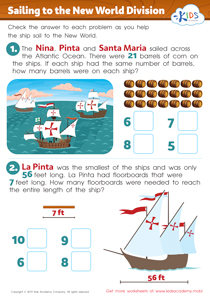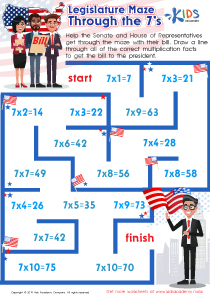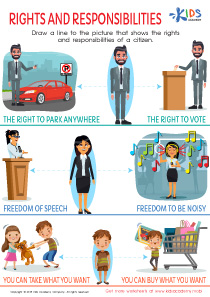Understanding communities Normal Community Worksheets for Ages 5-6
3 filtered results
-
From - To
Explore our "Understanding Communities" worksheets designed specifically for ages 5-6, helping young learners grasp the importance of their local environments. These engaging, interactive worksheets introduce essential concepts about community roles, responsibilities, and the various places and people that make up a community. Activities include matching exercises, drawing, and coloring, fostering creativity while reinforcing social studies skills. Suitable for both home and classroom use, these worksheets encourage discussions about teamwork and cooperation among friends and family. Perfect for early grade teachers and parents alike, these resources ensure young minds develop a rich understanding of the communities they live in.
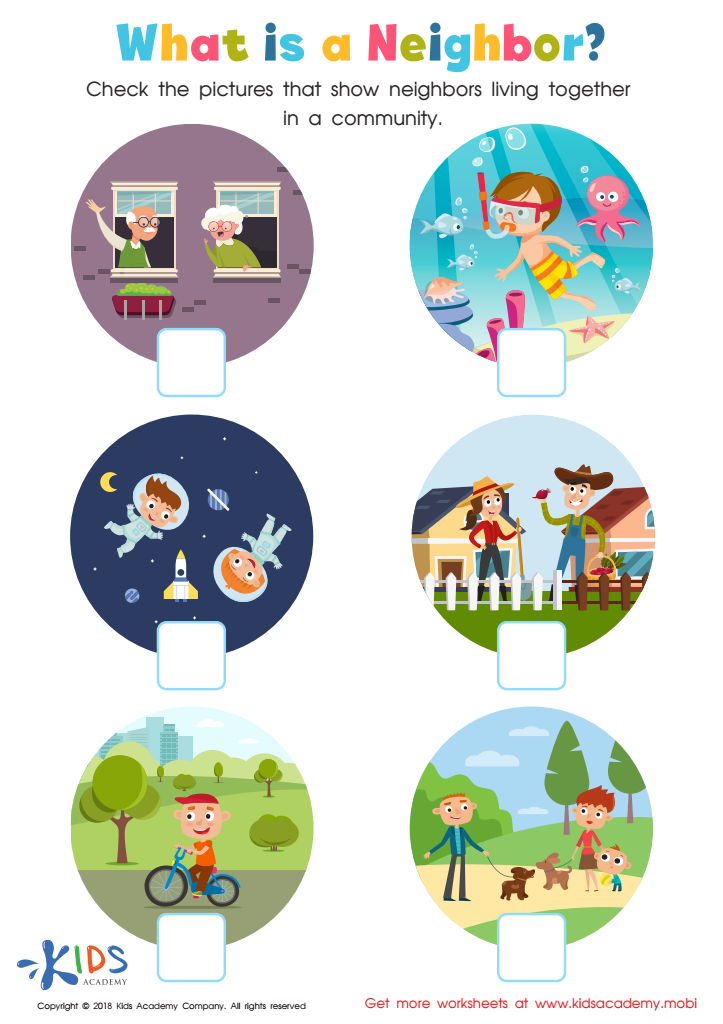

What is a neighbor Worksheet
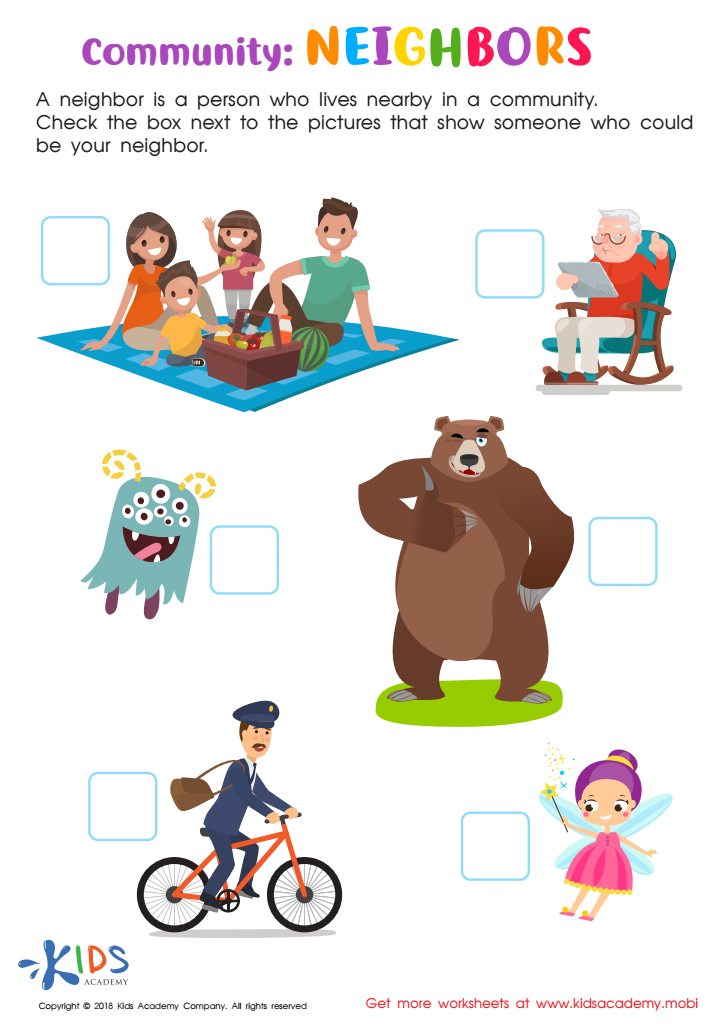

Community: Neighbors Worksheet
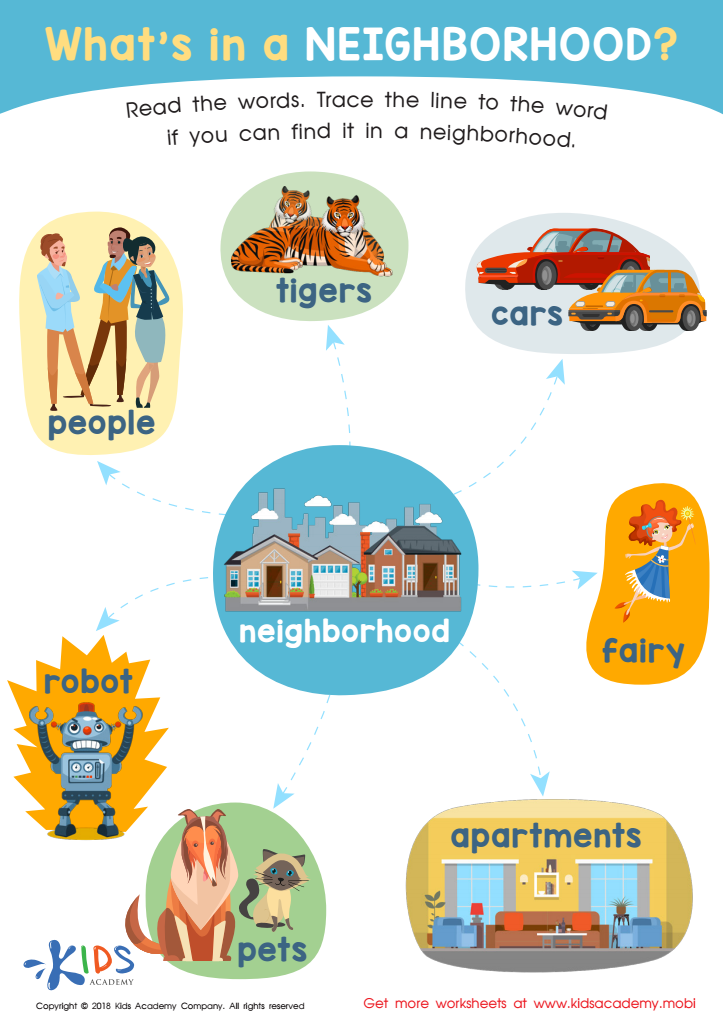

What's in a Neighborhood? Worksheet
Understanding communities is vital for children aged 5-6 because it fosters their social and emotional development. At this age, children are beginning to navigate their environments and form relationships with peers and adults. By exploring the concept of communities—such as neighborhoods, schools, and family units—parents and teachers can help children develop a sense of identity and belonging. This understanding promotes empathy, as children learn about diverse cultures, traditions, and perspectives within their community.
Engaging with communities also enhances children’s language and communication skills. Discussions about local landmarks, events, and community helpers encourage vocabulary expansion and spark curiosity. These interactions lay the groundwork for critical thinking and problem-solving as children learn to identify the roles of different community members, such as firefighters, doctors, and teachers, in maintaining a thriving society.
Furthermore, knowledge of communities cultivates a sense of responsibility and civic awareness in young children. As they understand the importance of cooperation and collaboration, they learn about contributing positively to their surroundings. Parents and teachers play a crucial role in guiding this exploration, ensuring children grow into informed, compassionate, and active members of their communities. Ultimately, nurturing this understanding equips children with essential skills for their future interactions.
 Assign to My Students
Assign to My Students






